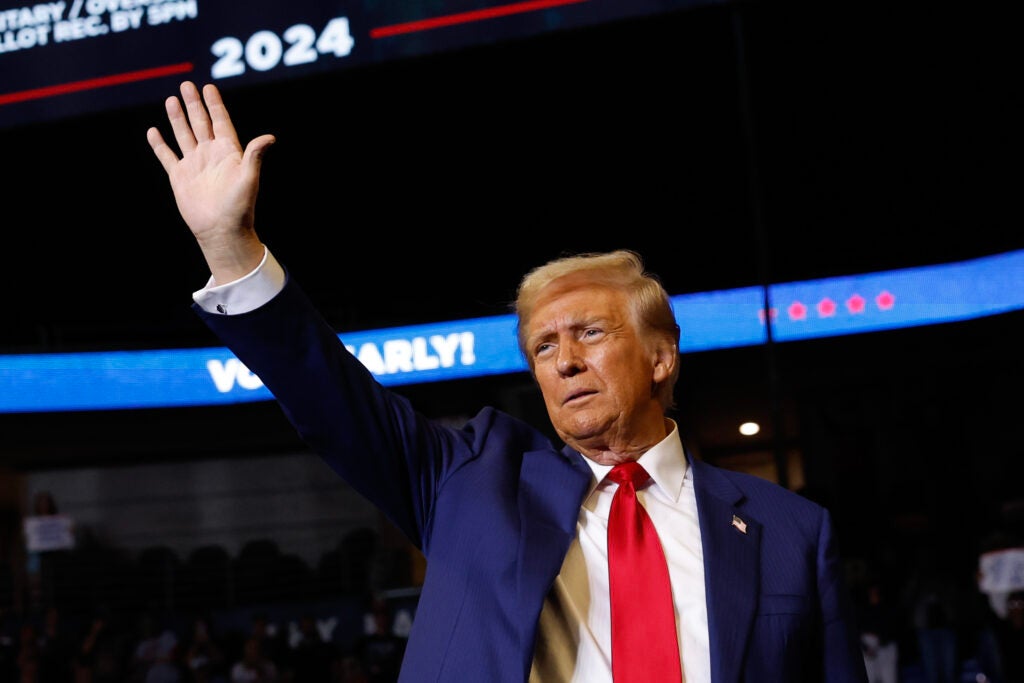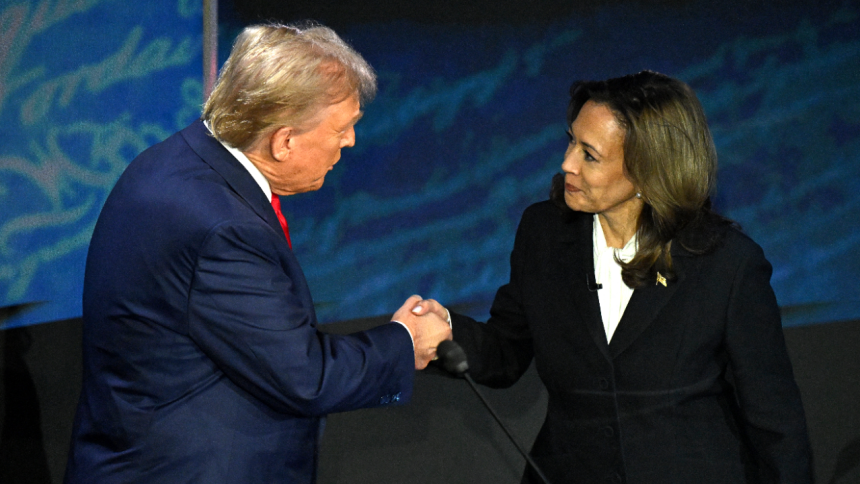Whether Vice President Kamala Harris or former President Donald Trump secures the White House, the next president is bound to prioritize a specific cornerstone of economic policy: taxes.
That’s because the Trump-era Tax Cuts and Jobs Act from 2017 is set to expire at the end of 2025. If Congress does nothing, millions of Americans (62 percent of filers, according to the Tax Foundation’s estimates) could see a tax hike.
The next administration will have to decide what to keep, what to let expire and what to change. If Congress remains divided and they can’t reach an agreement, tax policy analysts and experts interviewed by Bankrate agree they may have to punt on a solution and find a temporary fix.
“It’s an open question to what extent Congress can collaborate on some sort of deal,” says Garrett Watson, senior policy analyst and modeling manager at the Tax Foundation. “Neither side wants the whole thing to expire.”
No matter what, a national conversation about taxes will give the new chief executive the opportunity to advance other tax proposals tossed around on the campaign trail. For Trump, that might include creating an itemized deduction for auto loan interest, as well as exempting Social Security benefits, tip income and overtime pay from income taxes. Harris, meanwhile, might push to expand tax credits for families and first-time homebuyers as well as revamp capital gains and income taxes for the nation’s wealthiest taxpayers.
Few Americans (5 percent) put tax reform as their top economic issue for the upcoming election, according to Bankrate’s Politics and Economy Survey. Yet either candidate’s proposals would have a direct line to Americans’ wallets if approved.
On net, Harris’ tax plans would lead to lower taxes for all income groups except the richest 1 percent of Americans, while Trump’s proposals would result in an average tax increase for all income groups except the richest 5 percent of Americans, according to estimates from the nonpartisan Institute for Taxation and Economic Policy.
Here are four main pillars of Harris and Trump’s tax policies and how they differ.
Social Security, income taxes, child tax credit and more: Key takeaways on how Trump and Harris’ tax plans differ
- Restoring top-line tax rate to 39.6% (currently 37%);
- Increasing long-term capital gains taxes to 28% from 20% for Americans who make more than $1 million a year;
- Increasing the net investment income tax (NIIT) to 5% from 3.8% for Americans who make more than $400,000;
- Expanding the child tax credit (CTC) and earned income tax credit (EITC);
- Introducing a $25,000 tax credit for first-time homebuyers; and
- Exempting tips from income tax.

- Making income tax cuts from the Tax Cuts and Jobs Act permanent;
- Letting a $10,000 cap on State and Local Tax (SALT) deductions expire;
- Implementing a universal 20% tariff on all U.S. imports and 60% tariff on imports from China;
- Creating auto loan interest payments deduction;
- Exempting Social Security benefits, tips, overtime pay from income tax; and
- Possibly expanding the child tax credit (CTC) and creating a tax credit for family caregivers.
1. Harris would increase tax rates for high-income earners, while Trump would keep most of his tax cuts intact
The Tax Cuts and Jobs Act of 2017 marked the biggest tax reform since 1986, introducing sweeping changes that impacted all filers. On the income tax side, it doubled the standard deduction that taxpayers could claim to shield their earnings from taxes. The bill also lowered many individual income tax rates and widened the income thresholds that fell within them. Those changes, however, weren’t permanent.
Harris has supported keeping most of her opponent’s policies for individual filers intact. On the campaign trail, the vice president has supported changing income tax rates and brackets only for the country’s highest earners. In her economic plan, Harris has proposed raising the top-line tax rate to 39.6 percent for single filers who make above $400,000 and joint filers who earn more than $450,000. Currently, the top-line income tax rate is 37 percent.
Trump, however, has pledged to make the current law permanent, except for eliminating the $10,000 deduction cap on state and local taxes (SALT).
“Trump is proposing tax cuts for everybody; Harris is trying to gear her tax cuts more toward the middle class and raise taxes on higher-income taxpayers,” says Mark Luscombe, JD, CPA, principal federal tax analyst at Wolters Kluwer. “Where they have some overlap is on a lot of the current tax provisions from the Tax Cuts and Jobs Act.”
2. Harris wants to increase taxes on investment profits for high-income earners
When it comes to changing how the profits that Americans earn from selling their investments are taxed, Trump has so far been mum about what he’d do if he were voted in for a second term. Back on the 2020 campaign trail, he backed cutting the top capital gains tax rate for assets sold after more than a year to 15 percent from its current level of 20 percent.
Harris, however, has backed increasing those levies for higher-income earners, though at a lower rate than what President Biden proposed.
At an early September campaign rally in New Hampshire, Harris said she wanted to move the top long-term capital gains tax rate to 28 percent for Americans who make $1 million or more a year. Biden proposed matching the top long-term capital gains tax rate to the highest income tax rate (39.6 percent) in his latest fiscal year budget.
Meanwhile, for earners who make $400,000 or more, Harris said she would back raising the net investment income tax (NIIT) rate to 5 percent from 3.8 percent. Taken together, long-term capital gains taxes would rise to a maximum of 33 percent under Harris’ plan.
Harris has also said she’d support a 25 percent minimum tax on households whose net worth is more than $100 million, a proposal that’s often called a “billionaire minimum tax.”
(Working with a financial advisor can help you prepare for any major changes in how investments are taxed.)
3. Harris wants to scale up tax credits for families and first-time homebuyers, while Trump wants to create new tax breaks
Trump’s Tax Cuts and Jobs Act expanded the child tax credit (CTC) for children under 17 to $2,000 from an original level of $1,000. That law also made more families eligible for the credit, increasing the income cut off to $400,000 from $110,000. Those policy provisions could be included if Trump follows through with plans to make most of his tax code changes permanent. Sen. J.D. Vance even floated the idea of increasing the credit to $5,000, a policy idea that Trump himself has yet to comment on.
Harris has backed increasing the credit back up to $3,000 per child between the ages of 6 and 17 and $3,600 per child under 5 — echoing a similar COVID-era policy from the Biden administration’s American Rescue Plan (ARP). In an expanded proposal, Harris in mid-August announced that she backed increasing that credit to $6,000 for children in their first year of life. She’s also backed restoring the earned income tax credit (EITC) back to $1,502 to help childless low-income workers.
Those credits are in addition to a $25,000 down payment assistance program for first-time homebuyers who’ve paid their rent on time for two years, “with more generous support for those whose parents did not own a home,” according to her campaign site’s economic proposals.

Will Kamala Harris’ big tax breaks for businesses help?
Harris has emphasized small businesses in her campaign platform. Here’s what she’s proposing.
Read more
On Sunday, Trump floated a new tax credit for family caregivers, though stopped short of providing details on how big the tax break might be and who might qualify. Trump has also backed letting Americans deduct auto loan interest payments from their income taxes — a policy plan that would seemingly only apply to Americans who don’t claim the standard deduction.
Trump also has promised to eliminate income taxes on Social Security benefits. About 2 in 5 people who get Social Security (40 percent) must pay taxes on their benefits, according to the Social Security Administration. Up to 85 percent of a recipient’s benefits may be taxable, depending on household income.
“Getting rid of that would be skewed toward the wealthy,” Luscombe says.
Trump has also backed exempting overtime pay from taxation and, similarly to Harris, tips — proposals that analysts say might not provide the targeted help to lower-income households the way either candidate may think.
“If those proposals were to be taken seriously and lawmakers would try to implement them, they would need very strict guardrails to prevent abuse,” says Joe Hughes, senior policy analyst at the Institute for Taxation and Economic Policy. “There are better policies from a neutral economic perspective that help households based on income level, not based on a particular profession.”
Harris would exempt tips only for service and hospitality workers who make $75,000 a year or less, according to her campaign plans.
4. Trump has backed universal tariffs on U.S. imports that analysts say could offset tax benefits
A staple of Trump’s tax policy — and a clear departure from his opponent’s plans to raise revenue through tax hikes — is tariffs.
On the campaign trail, Trump has been vocal about instituting a 20 percent universal tariff on all foreign imports to the U.S. He’s also backed increasing that charge to 60 percent for imports from China.
“The higher the tariff, the more likely it is that the company will come into the United States and build a factory in the United States, so it doesn’t have to pay the tariff,” Trump said in an interview in October at the Economic Club of Chicago.
Presidents have more authority to institute higher tariffs without congressional approval through an executive order, Watson says. If tariffs rise and further tax cuts aren’t approved, Trump’s tax policies would rank as the 7th largest tax increase since 1940, Tax Foundation estimates show.
“If you were to net out the tax cuts that he proposed with the tariffs that he’s proposing, a lot of Americans will end up worse off because tariffs are such a big burden on working class and lower-class Americans in particular,” Watson says.
Harris hasn’t proposed any new tariffs on the campaign trail, but it’s been a clear part of the Biden-Harris administration’s trade strategy. Biden has kept many of Trump’s first-term tariffs in place, and he approved another round of tariff increases in May on $18 billion worth of imports from China.
Bottom line
Many of the candidates’ proposals depend on the makeup of Congress. Both Trump and Harris’ more aggressive plans — especially those that lack detail about implementation — might face an uphill battle if the House of Representatives and Senate are divided.
Lawmakers are likely to remain concerned about rising federal debt and deficits. Harris’ plans could lead to almost $4 trillion in debt, while Trump’s proposals are projected to exacerbate the deficit by $8 trillion even when including revenue raised through tariffs, according to estimates from the Committee for a Responsible Federal Budget.
A similar expansion to the child tax credit (CTC) failed in the Senate earlier this year, while the Biden-Harris administration’s Build Back Better (BBB) was replaced with the smaller Inflation Reduction Act of 2022 (IRA).
“That is the big question: To what extent do they have the political leverage to pair the tax cuts they’re talking about with those tax hikes?” Watson says. “Tax is going to be front-and-center and forced upon policymakers. This tax cliff is coming.”
Read the full article here














